Overview
The seven benefits of using sterile pipette tips in pharmaceutical labs are paramount:
- They prevent contamination
- They enhance accuracy
- They offer convenience
- They ensure regulatory compliance
- They provide versatility
- They reduce cross-contamination
- They are cost-effective
These sterile tools are not just accessories; they are essential for maintaining sample integrity and achieving precise measurements. Compliance with industry standards is critical, as it directly influences the reliability of experimental outcomes in pharmaceutical research. In summary, the adoption of these high-quality instruments is vital for any laboratory aiming to uphold excellence in their scientific endeavors.
Introduction
The pharmaceutical landscape is increasingly defined by precision and reliability, where even the smallest misstep can lead to significant consequences. Within this critical environment, the choice of laboratory tools is pivotal, particularly the use of sterile pipette tips. These essential instruments not only prevent contamination but also enhance accuracy and compliance, ultimately safeguarding the integrity of research outcomes.
How can laboratories ensure they are maximizing the benefits of these tools while navigating the complexities of operational efficiency and cost-effectiveness?
JM Science Inc.: Premium Sterile Pipette Tips for Reliable Lab Results
JM Science Inc. offers a diverse range of high-quality clean transfer devices specifically designed to meet the rigorous standards demanded by pharmaceutical facilities. These sterile pipette tips are produced under strict quality control protocols, ensuring they are free from contaminants and suitable for sensitive applications.
By choosing JM Science's clean disposable transfer tools, research facilities can significantly enhance the reliability of their results—an essential factor in pharmaceutical research and development. This commitment to quality not only supports the but also reinforces JM Science's position as a leader in the industry.
Contamination Prevention: Ensuring Sample Integrity with Sterile Pipette Tips
The use of sterile pipette tips is paramount for preventing contamination during liquid handling in pharmaceutical laboratories. These tools are pre-sterilized through methods such as gamma radiation or high heat and are packaged in clean, sealed containers to eliminate the risk of introducing microorganisms into samples. Certified to be free from living organisms, pyrogen, DNase, and RNase, sterile transfer tools are essential for sensitive applications. Recent studies indicate that even minor contamination can lead to erroneous results, significantly jeopardizing research integrity. For instance, a study revealed that contamination from non-sterile instruments could result in false positives or negatives, a critical concern in pharmaceutical research where precision is vital.
Laboratories that prioritize the use of clean transfer tools demonstrate enhanced sample integrity. Research underscores that employing clean implements can prevent the introduction of harmful bacteria and viruses, thereby safeguarding sensitive samples such as DNA and cell cultures. This is crucial, as contamination can adversely impact experimental outcomes and lead to costly rework and wasted resources.
Expert perspectives further highlight the importance of clean dispensing tools. One researcher noted that maintaining cleanliness is essential for ensuring the reliability of experimental outcomes, stating, 'clean tools only remain uncontaminated if you treat them with care.' This underscores the necessity for to maintain the integrity of clean sampling instruments until they are ready for use. Additionally, the growing global demand for liquid management tools has influenced the pricing of dispensing ends, making it vital for research facilities to evaluate their expenditures judiciously. By employing sterile pipette tips as transfer tools, laboratories can ensure their samples remain uncontaminated, thereby preserving the accuracy and reliability of their findings in pharmaceutical research.
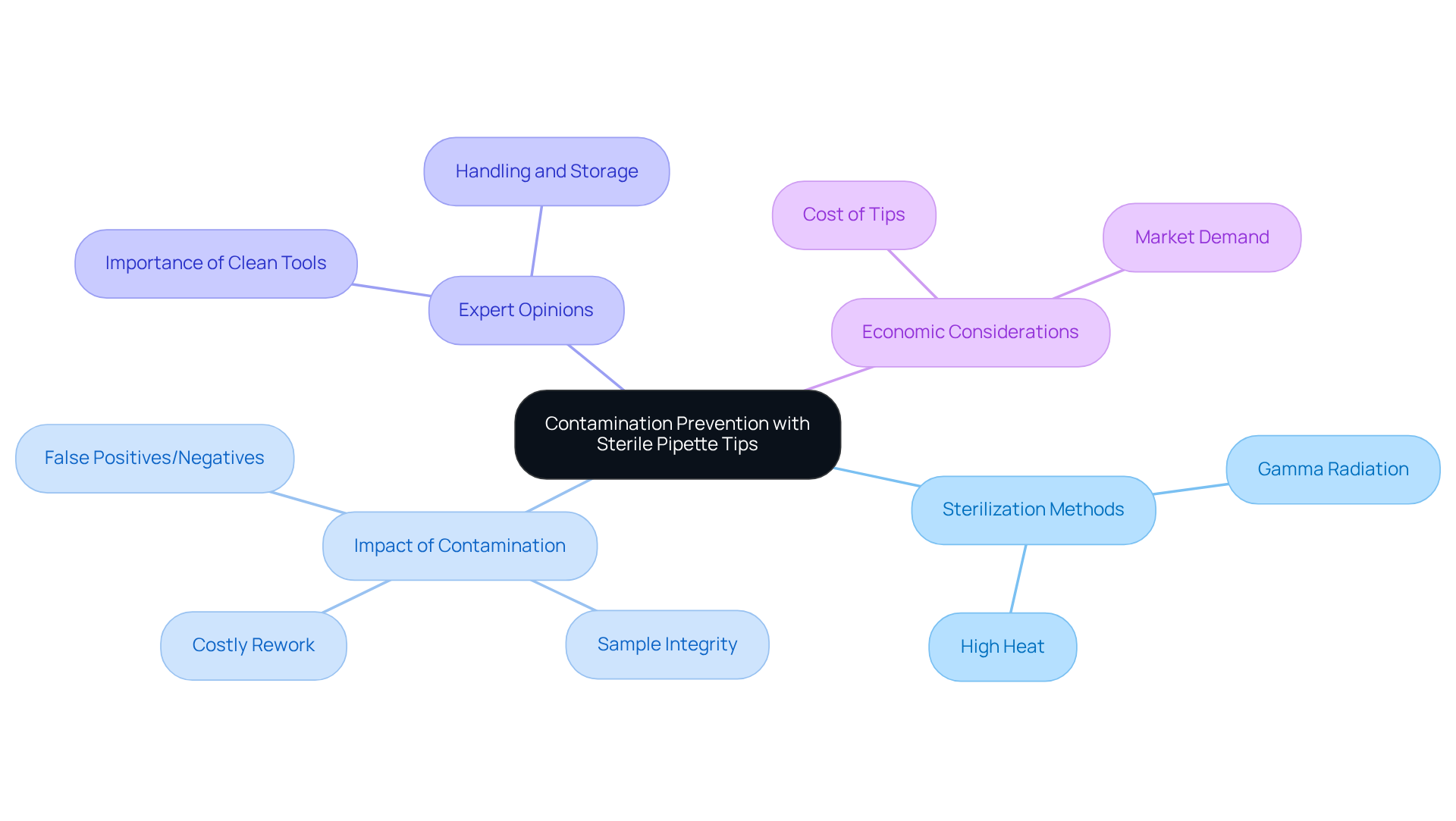
Enhanced Accuracy: Achieving Precise Measurements with Sterile Pipette Tips
Sterile suction devices are essential for optimal liquid management, ensuring a uniform and precise fit with dispensers. This precision significantly reduces the risk of air bubbles and liquid retention, which are critical factors in pharmaceutical applications. Imprecise measurements can lead to considerable errors, with research indicating that approximately 27 percent of observed instruments malfunctioned within a six-month period. Such discrepancies can jeopardize experimental outcomes and the safety of drug formulations.
By utilizing clean laboratory tools, researchers enhance the reliability of their findings, a crucial element for effective drug development. For instance, accurate measurements obtained with clean applicators have been shown to improve the precision of drug formulation processes, ultimately contributing to better patient outcomes.
The quality of dispensers directly influences experimental results, underscoring the necessity of employing high-quality, sterile options in pharmaceutical laboratories. To further guarantee accuracy, it is vital to for liquid handling devices, as this practice aids in identifying potential performance issues and maintaining compliance with industry standards.
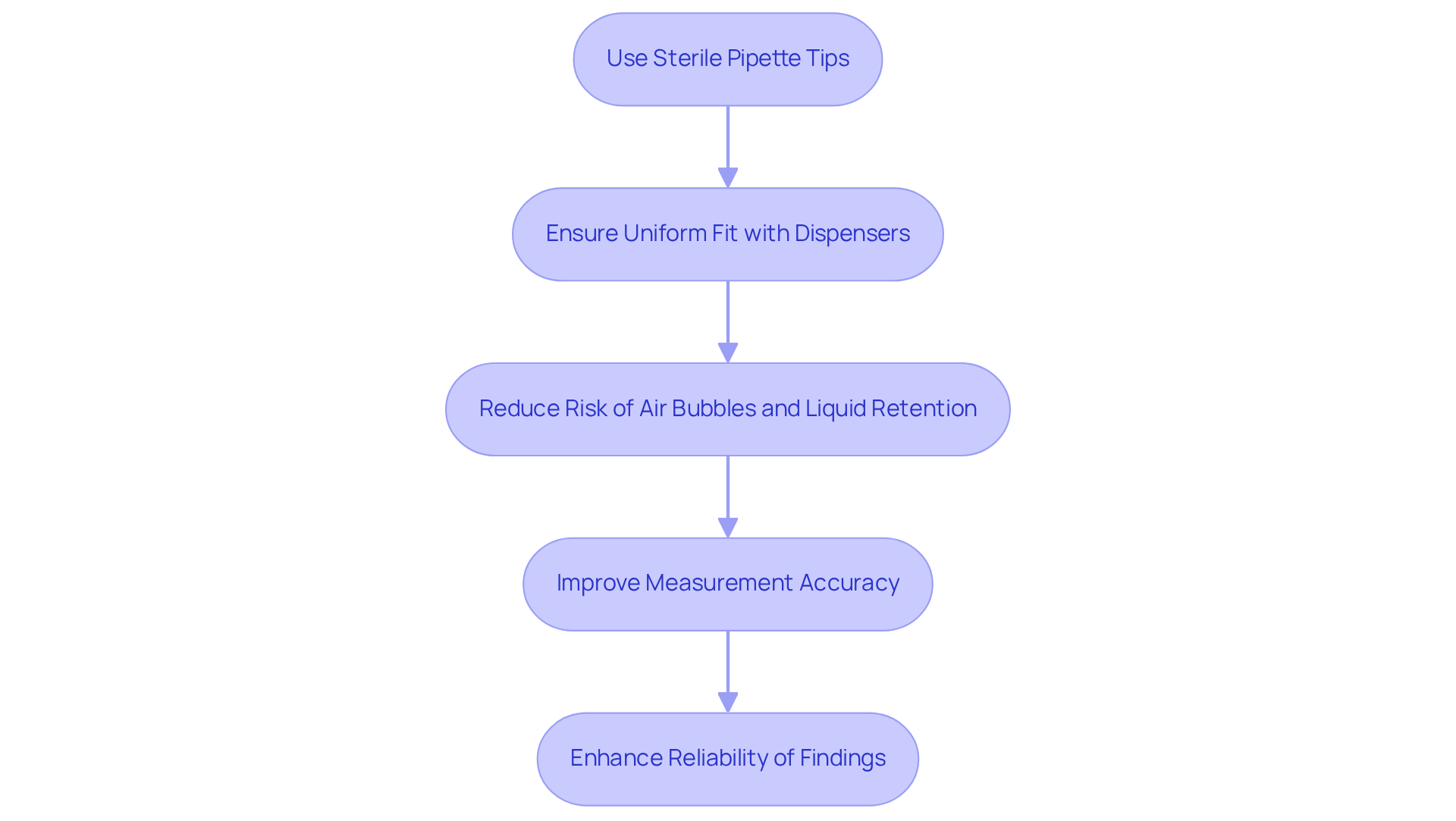
Convenience Factor: Time-Saving Benefits of Pre-Sterilized Pipette Tips
Pre-sterilized laboratory tools significantly reduce the need for labor-intensive sterilization procedures. This allows researchers to concentrate on their experiments rather than preparation, a convenience that is especially beneficial in high-throughput laboratories where efficiency is critical. By employing sterile pipette tips alongside other laboratory tools, laboratories can optimize their processes, minimize preparation time, and ultimately enhance overall productivity.
For instance, research indicates that the global market for liquid handling devices was valued at $1.546 billion in 2021 and is projected to reach $2.3 billion by 2031, underscoring the increasing demand for effective liquid management solutions. Furthermore, purification specialists at AstraZeneca have observed that "the time savings is substantial, saving two staff one day each per week, so we can focus on more challenging work." This transformation not only streamlines operations but also contributes to .
Moreover, the automated segment of the dispensing tools market is anticipated to be the most lucrative, further emphasizing the trend towards efficiency in scientific practices. This shift highlights the importance of investing in high-quality scientific instruments to improve laboratory performance.
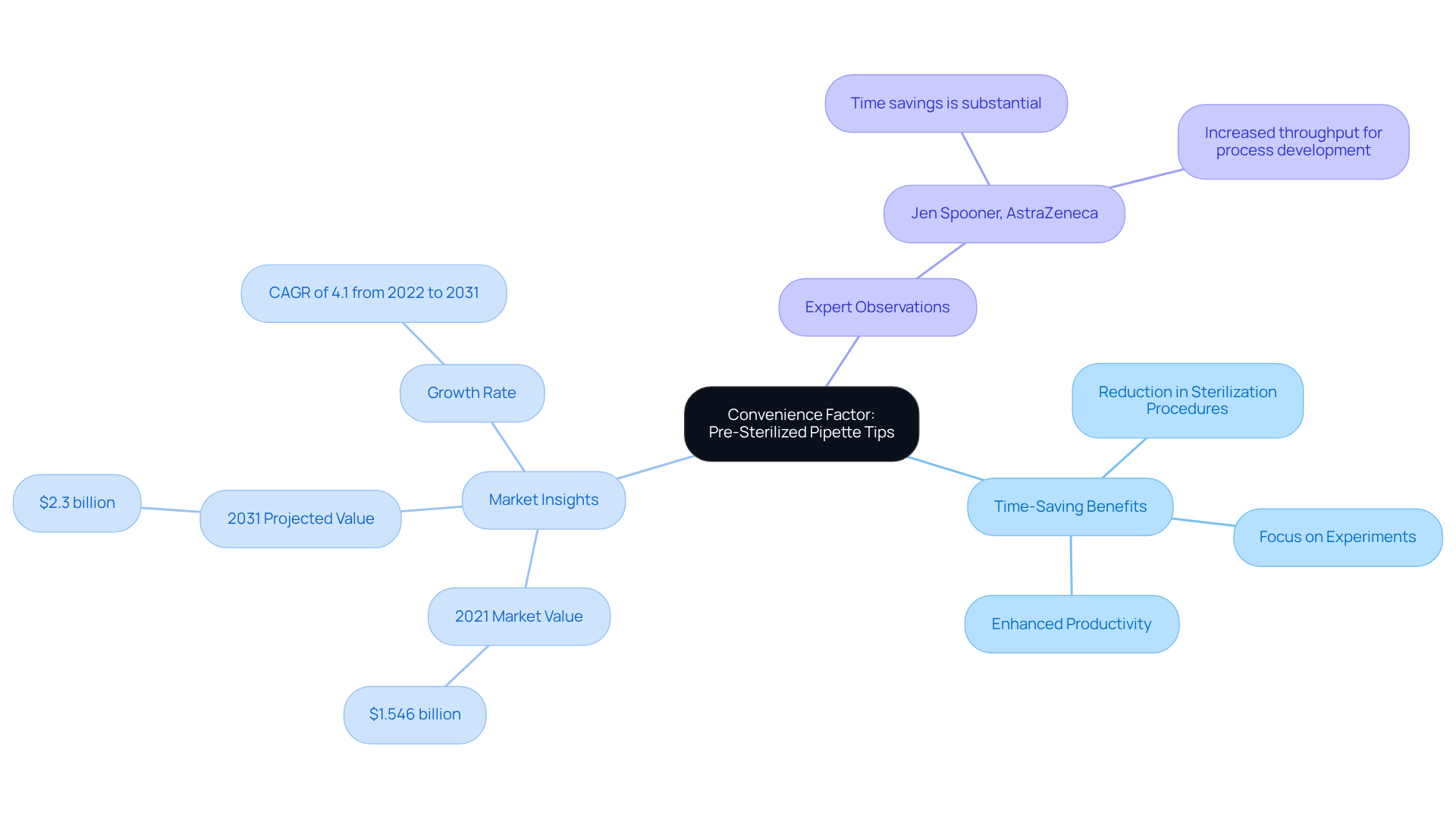
Regulatory Compliance: Meeting Standards with Sterile Pipette Tips
In the pharmaceutical industry, adherence to regulatory standards is not just essential; it is imperative. Sterile pipette tips from JM Science Inc. are manufactured in strict compliance with applicable regulations, ensuring they meet the highest quality and safety standards. By employing these stringent guidelines, facilities can showcase their commitment to maintaining exceptional operational standards, particularly during regulatory inspections and audits. This unwavering commitment not only bolsters the facility's credibility but also significantly reduces the risk of non-compliance findings, ultimately safeguarding the integrity of pharmaceutical research and development.
Notably, organizations with robust compliance capabilities experience 62% fewer serious adverse events in clinical trials, underscoring the critical importance of utilizing compliant sterile pipette tips. To further ensure adherence, it is vital for facilities to regularly assess their tip inventory and verify that they are utilizing products that .
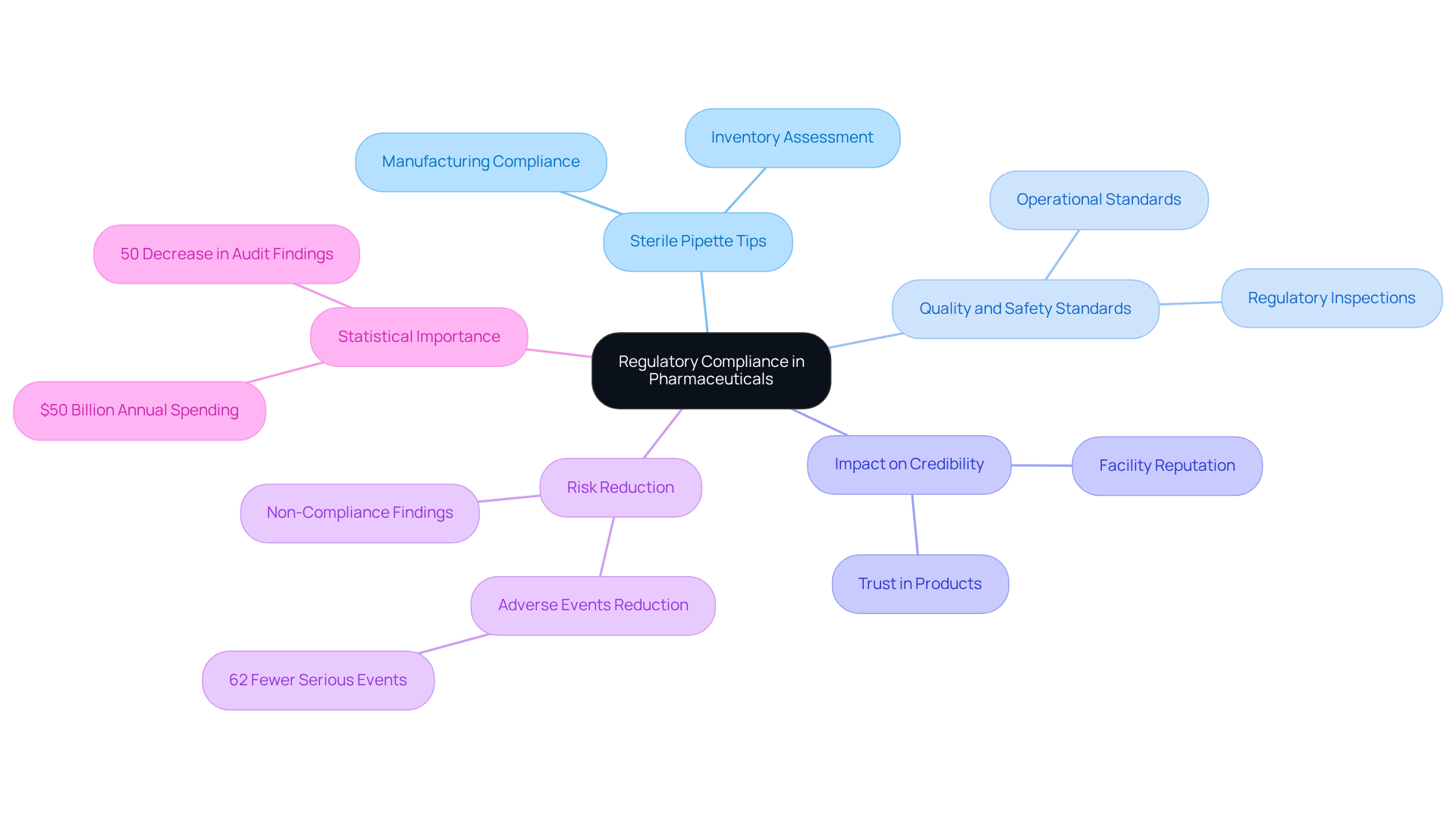
Versatility: Adapting Sterile Pipette Tips for Multiple Laboratory Applications
Sterile pipette tips are essential devices used in a variety of laboratory applications, including molecular biology, clinical diagnostics, and pharmaceutical research. Their design ensures compatibility with diverse liquid handling models and sizes, making them ideal for tasks that range from transferring minute volumes of reagents to managing larger sample sizes. This adaptability not only standardizes but also enhances efficiency and consistency in experimental outcomes. For instance, in molecular biology laboratories, the use of sterile pipette tips is critical for precise sample transfers, significantly reducing contamination risks and ensuring reliable results. Similarly, clinical diagnostics laboratories depend on sterile pipette tips and these instruments for accurate liquid handling, which is vital for obtaining precise test results.
According to industry insights, the global liquid handling tools market is projected to expand at a CAGR of 7.88% from 2025 to 2033, underscoring the increasing demand for reliable liquid handling instruments. As Swapna Singh noted, "The growing biotech and pharmaceutical industries increase the need for accurate and dependable liquid handling instruments, including dispensing points, to aid drug discovery, development, and quality assurance." The ability to customize clean transfer tools for various applications underscores their significance in maintaining high standards of quality and reliability within scientific environments.
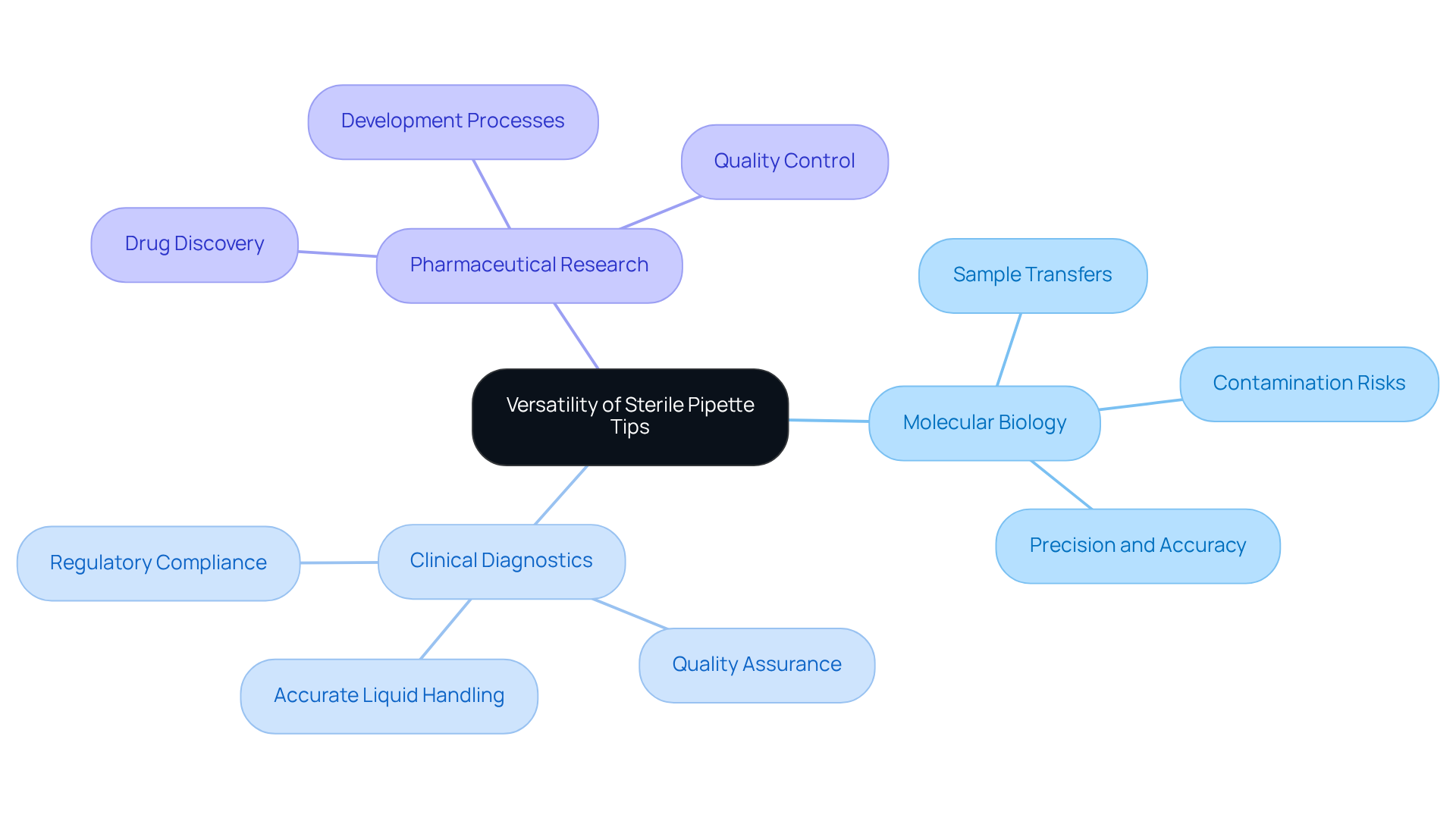
Cross-Contamination Reduction: Safeguarding Samples with Sterile Pipette Tips
The utilization of clean dispensing tools is essential for minimizing the risk of cross-contamination among samples. Each tip is meticulously designed for single use, effectively preventing any residual liquids or contaminants from transferring between experiments. This practice is vital in pharmaceutical research, where even the slightest can jeopardize results and pose significant risks to patient safety.
By employing clean sampling tools, laboratories can safeguard the integrity of their samples, leading to more reliable and accurate outcomes. Moreover, research has demonstrated that implementing rigorous cleaning procedures and using disposable applicators can significantly reduce contamination levels, thereby enhancing the overall quality of pharmaceutical research.
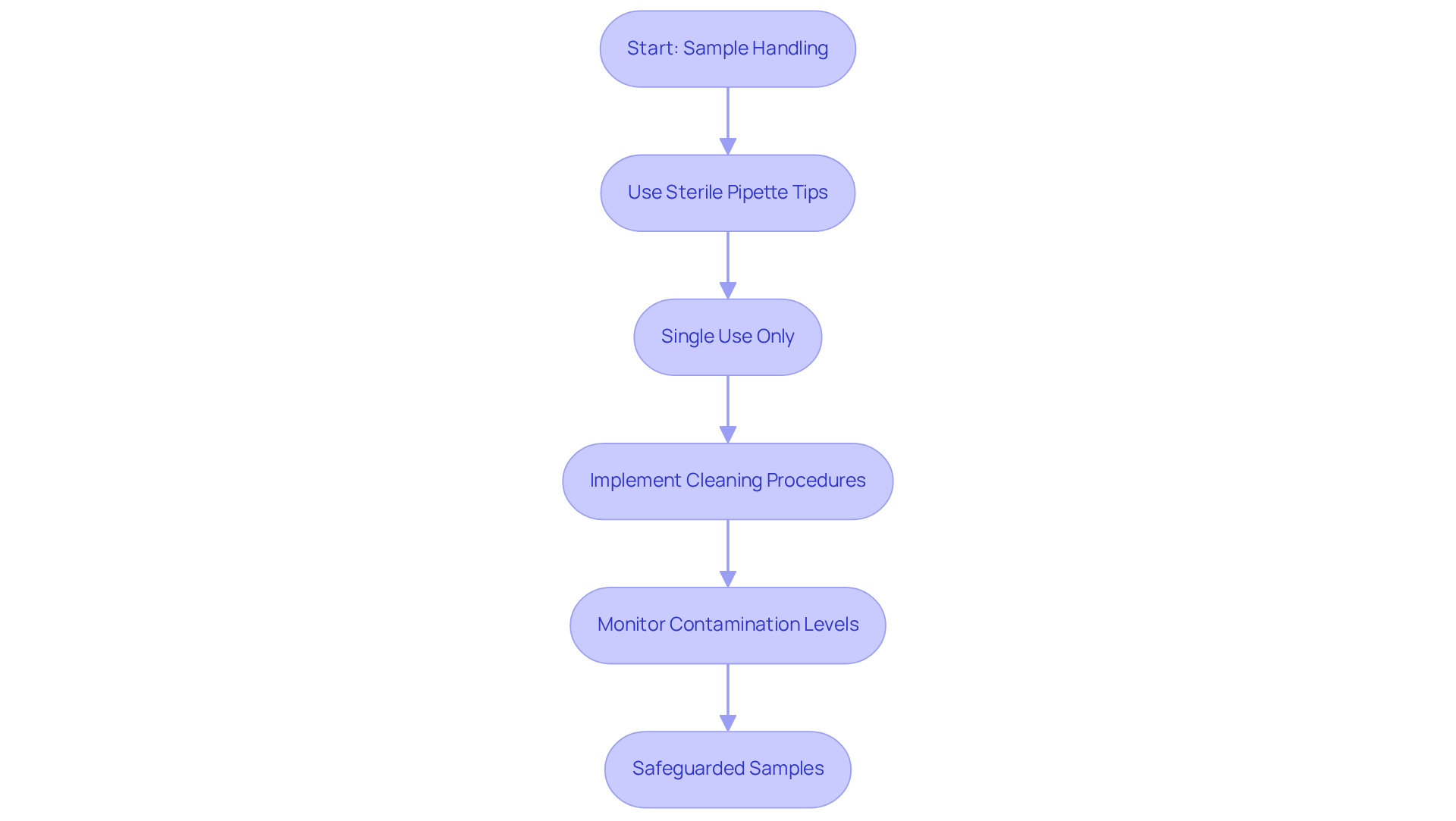
Cost-Effectiveness: Saving Money with Sterile Pipette Tips
Investing in sterile pipette tips may initially seem more costly than opting for non-sterile alternatives; however, the long-term financial benefits are substantial. Sterile pipette tips play a crucial role in , which is a leading cause of experimental errors. Statistics reveal that 70-80% of pipetting errors arise from user mistakes, often worsened by insufficient training and improper equipment. Most analysts lack training in liquid handling techniques and maintenance, underscoring the importance of proper instruction in reducing errors. By utilizing clean laboratory tools, facilities can significantly lower the chances of costly retests and the associated expenses of failed experiments.
Moreover, the time efficiency gained from using pre-sterilized instruments contributes to overall cost savings. Laboratories can optimize their workflows, resulting in faster turnaround times for experiments and analyses. For instance, a study highlighted that a pharmaceutical laboratory saved thousands of dollars annually by minimizing contamination-related failures through the exclusive use of clean dispensing tools.
Statements from industry experts reinforce this perspective:
- "The financial repercussions of contamination can be staggering; investing in high-quality clean dispensing tools is a proactive approach that delivers long-term benefits."
- Additionally, the costs linked to liquid handling extend beyond just the instruments and calibration, further emphasizing the hidden expenses associated with pipetting errors.
By prioritizing the use of sterile pipette tips, facilities not only enhance their operational efficiency but also protect their financial health, making them a wise choice for any research-focused environment. Furthermore, the market for laboratory dispensing tools is projected to reach approximately USD 1.5 billion by 2027, indicating a growing demand for superior dispensing accessories in laboratories.
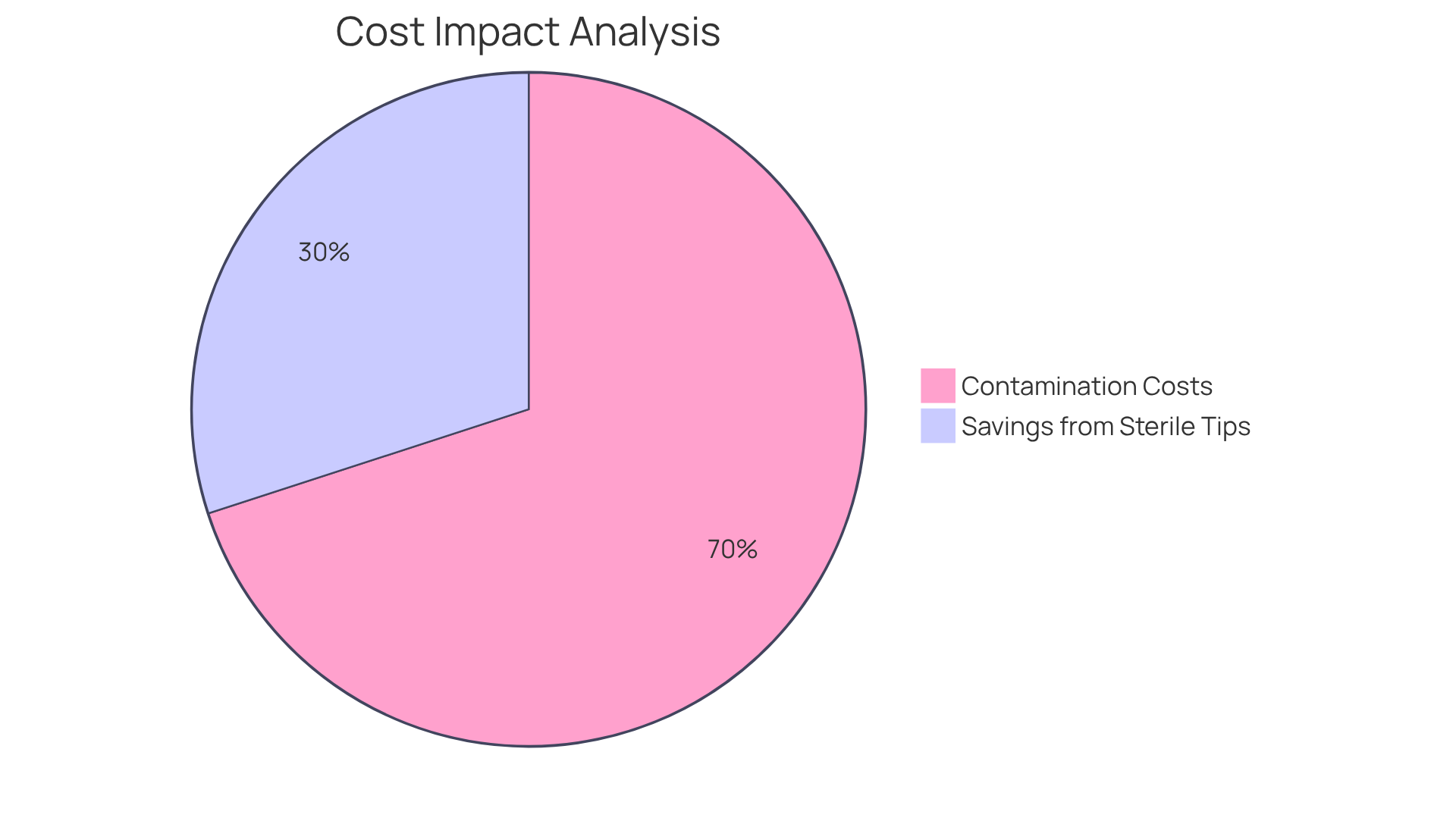
User-Friendly Design: Improving Lab Efficiency with Sterile Pipette Tips
Sterile transfer tips are meticulously crafted with user comfort and efficiency at the forefront. Their ergonomic designs facilitate easy attachment and removal from liquid handling tools, significantly reducing hand strain during repetitive tasks. This thoughtful design not only but also boosts efficiency in the workspace by minimizing the time required for liquid handling.
Research indicates that facilities utilizing ergonomic sterile pipette tips experience a notable increase in user satisfaction, with many professionals reporting improved comfort and reduced fatigue. According to a report from the U.S. National Institutes of Health, the market is projected to expand at a compound annual growth rate (CAGR) of approximately 6.5% over the next five years, reflecting robust growth driven by advancements in research technologies.
By prioritizing ergonomic solutions, research facilities can cultivate a healthier work environment while simultaneously enhancing productivity, ultimately leading to more efficient workflows and superior outcomes in research and diagnostics.
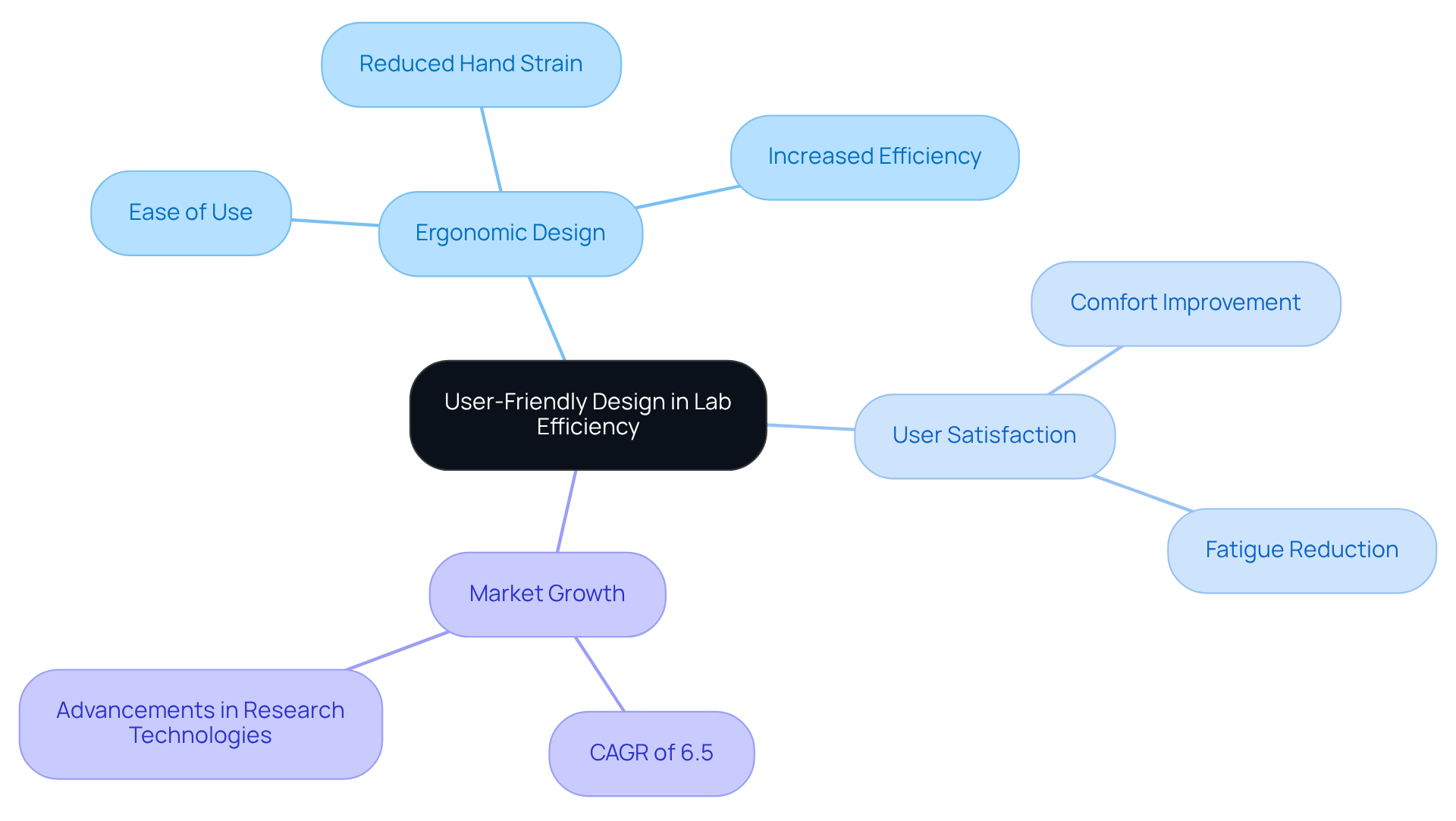
Environmental Considerations: Sustainable Practices with Sterile Pipette Tips
As research facilities increasingly recognize their ecological impact, the use of clean sampling accessories crafted from recyclable materials is on the rise. JM Science Inc. leads this initiative, offering solutions that significantly minimize plastic waste without sacrificing sterility or performance.
Research indicates that scientific activities generate over 5.5 million tons of plastic waste annually, accounting for 1.8% of global plastic waste, with disposable transfer devices being a major contributor. By integrating eco-friendly sterile pipette tips into their operations, laboratories enhance their sustainability efforts while preserving the integrity of their research.
Notably, programs such as MIT's Lab Plastics Recycling Program have illustrated the potential for recycling clean lab plastics, including pipette tip boxes, which represented 80% of their clean plastic waste. In its inaugural year, the program collected 170 pounds of plastic weekly, increasing to 280 pounds by 2022, highlighting the success of such recycling efforts.
This transition towards is vital for cultivating a more responsible scientific community, ultimately paving the way for a greener future.
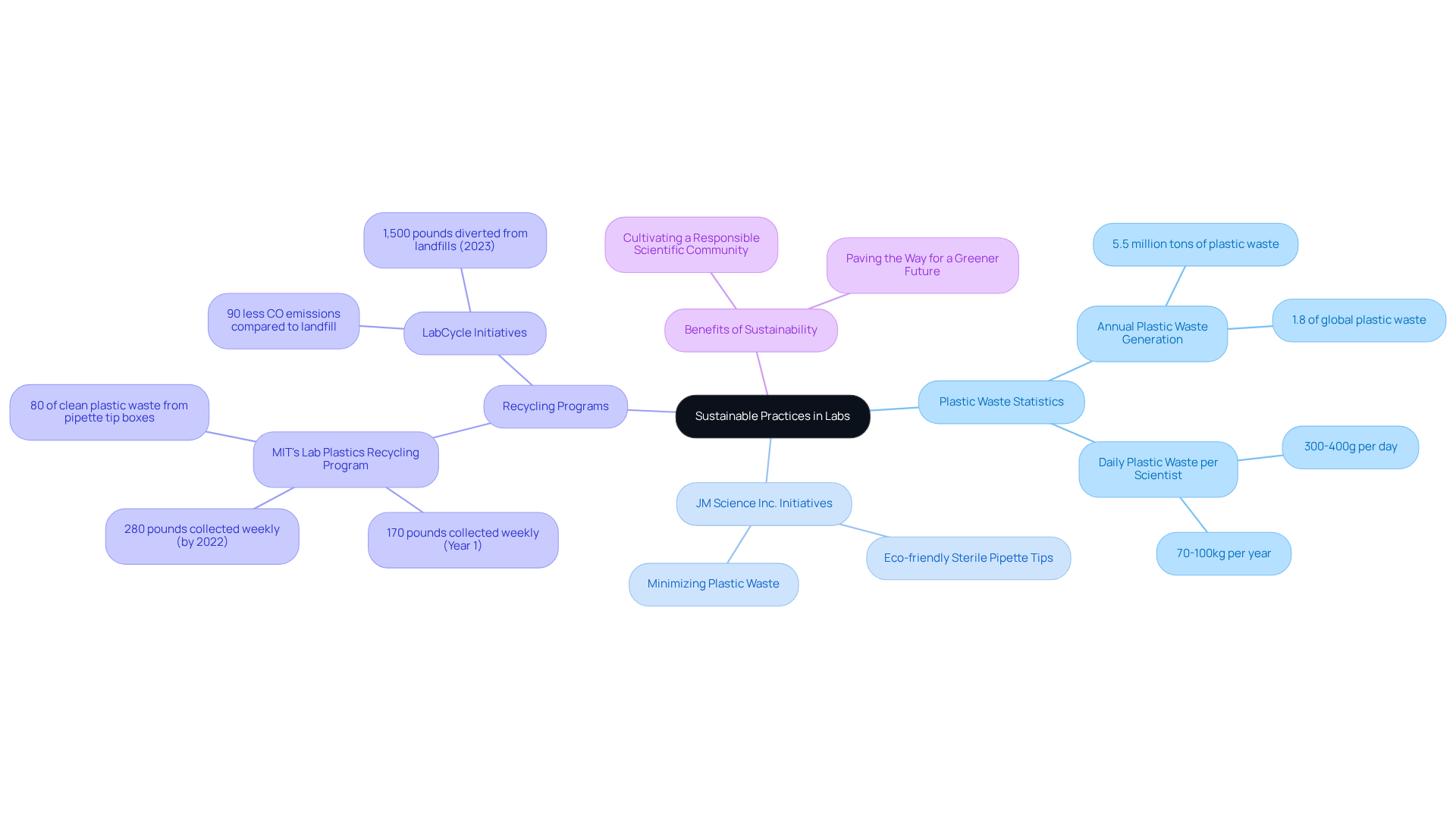
Conclusion
The utilization of sterile pipette tips in pharmaceutical laboratories is essential for maintaining the integrity and reliability of research outcomes. These high-quality tools not only prevent contamination but also enhance measurement accuracy and operational efficiency. By prioritizing sterile pipette tips, laboratories can significantly improve their research processes, leading to more trustworthy results and better patient outcomes.
Throughout this article, the numerous advantages of sterile pipette tips have been emphasized, including their critical role in contamination prevention, precision in measurements, and adherence to regulatory standards. The convenience of pre-sterilized options saves valuable time, while their versatility allows for a range of applications across various laboratory settings. Moreover, the cost-effectiveness of these tools is significant, as they mitigate the risks associated with contamination-related errors and streamline workflows.
Embracing the use of sterile pipette tips transcends mere choice; it is a necessity for laboratories striving to uphold the highest standards of quality and reliability in their research. As the demand for effective liquid handling solutions continues to rise, investing in these tools will not only enhance scientific outcomes but also contribute to sustainable practices within the industry. By making informed decisions regarding the tools utilized in research, laboratories can pave the way for advancements that benefit both science and society as a whole.




